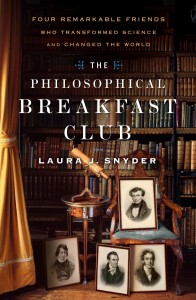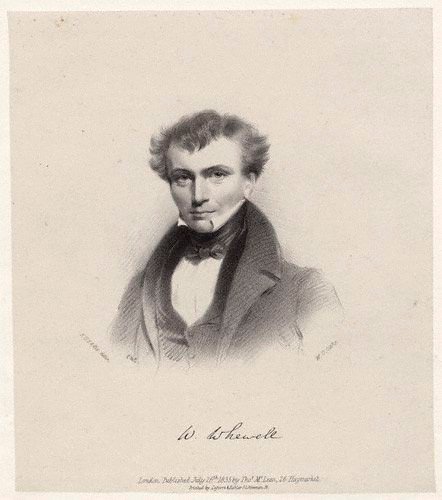By Laura J. Snyder (Guest Contributor)
It was June 24, 1833, at the meeting of the recently-founded British Association for the Advancement of Science. William Whewell (pronounced “who-ell”), a fellow of Trinity College, Cambridge, and former professor of Mineralogy, had just finished a speech opening the conference. When the applause died down, the members were shocked to see a frail, grizzled man rise slowly to his feet. Samuel Taylor Coleridge, the celebrated Romantic poet, had written a treatise on scientific method decades before. Coleridge had hardly left his home in Highgate for the past thirty years, yet he had felt obliged to make the journey to attend this meeting.
At that time, the practitioners of science were known primarily as “natural philosophers.” Coleridge remarked acidly that the members of the association should no longer refer to themselves this way. Men digging in fossil pits, or performing experiments with electrical apparatus, hardly fit the definition. They were not, he meant, “armchair philosophers,” pondering the mysteries of the universe, but practical men – with dirty hands, at that. As a “real metaphysician,” he forbade them the use of this honorific.
The hall erupted in a tumultuous din, as the assembled group took offense at the insult Coleridge clearly intended. Then Whewell rose again, quieting the crowd. He courteously agreed with the “distinguished gentleman” that a satisfactory term with which to describe the members of the association was wanting. If “philosophers” is taken to be “too wide and lofty a term,” then, Whewell suggested, “by analogy with artist, we may form scientist.”
It was fitting that the term was invented by Whewell who, along with three of his friends, transformed the natural philosopher into the modern scientist.
 Laura J. Snyder is associate professor of philosophy at St. John’s University, and the author of Reforming Philosophy: A Victorian Debate on Science and Society (University of Chicago, 2006) and The Philosophical Breakfast Club: Four Remarkable Friends who Transformed Science and Changed the World (Broadway, February 22, 2011).
Laura J. Snyder is associate professor of philosophy at St. John’s University, and the author of Reforming Philosophy: A Victorian Debate on Science and Society (University of Chicago, 2006) and The Philosophical Breakfast Club: Four Remarkable Friends who Transformed Science and Changed the World (Broadway, February 22, 2011).
This post was first published on Wonders & Marvels in January 2011.

